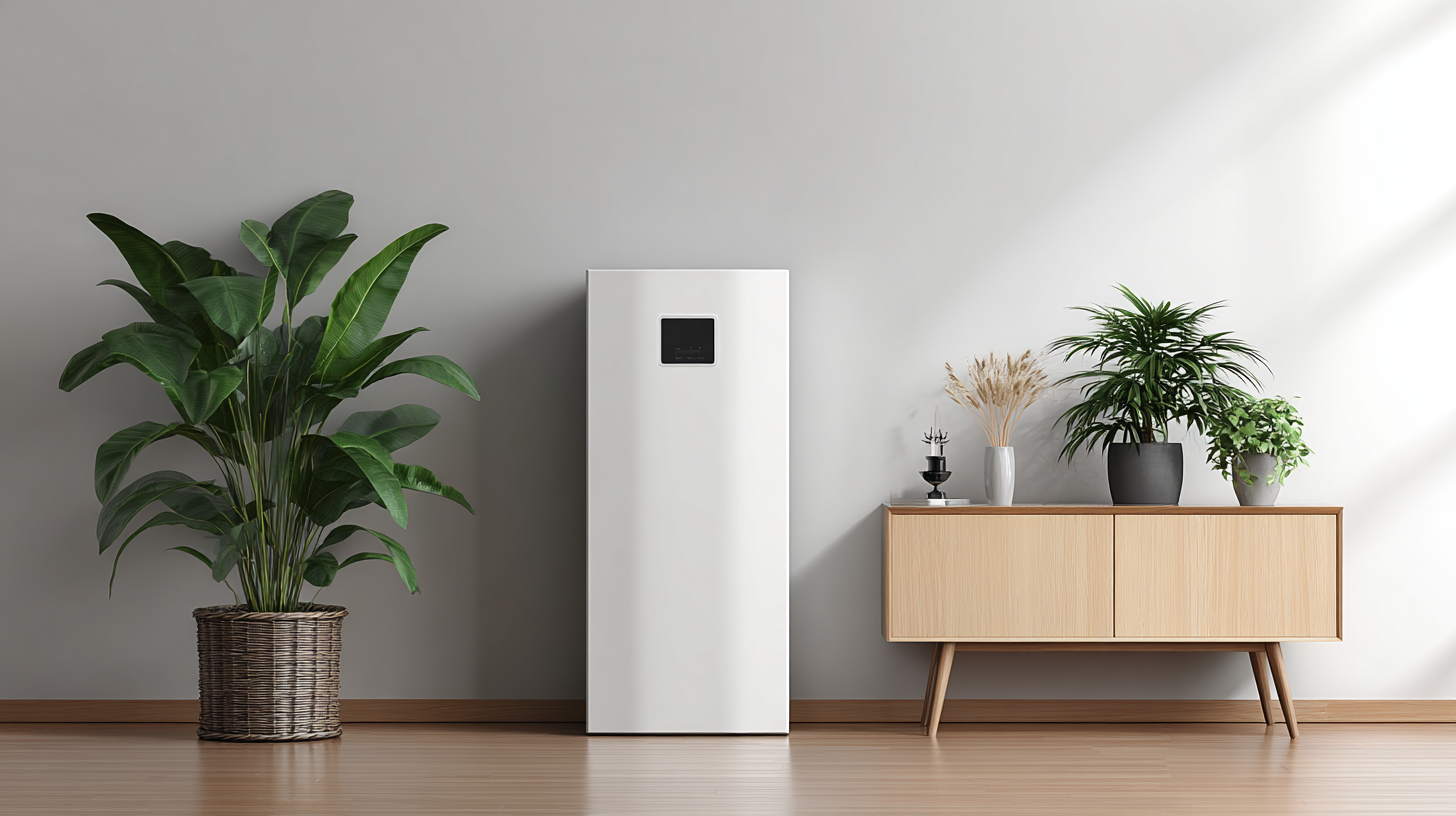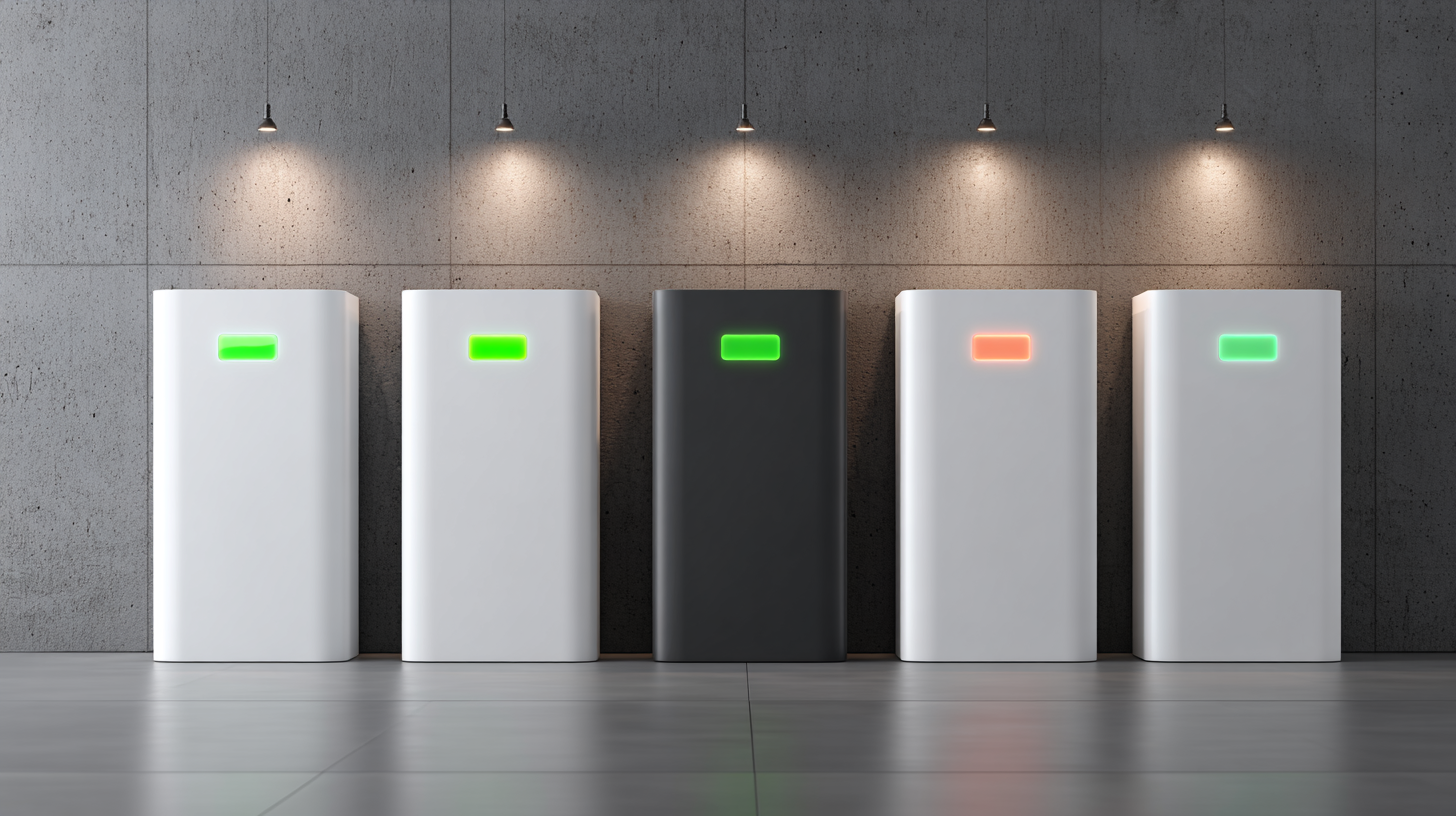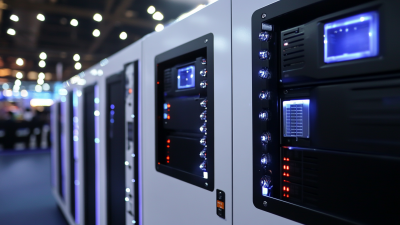Factory Tour
How to Choose the Best Household Energy Storage Battery for Your Home
 Choosing the right Household Energy Storage Battery for your home is a crucial decision that can significantly impact your energy efficiency, cost savings, and overall sustainability. With the increasing reliance on renewable energy sources and the growing concerns about energy independence, homeowners are seeking effective solutions to store excess energy generated by solar panels or wind turbines. In 2025, the market for household energy storage will evolve, presenting new and improved options that cater to diverse needs and preferences.
Choosing the right Household Energy Storage Battery for your home is a crucial decision that can significantly impact your energy efficiency, cost savings, and overall sustainability. With the increasing reliance on renewable energy sources and the growing concerns about energy independence, homeowners are seeking effective solutions to store excess energy generated by solar panels or wind turbines. In 2025, the market for household energy storage will evolve, presenting new and improved options that cater to diverse needs and preferences.
This guide highlights the top five household energy storage batteries available in 2025, focusing on performance, capacity, lifespan, and integration capabilities. By understanding the unique features and benefits of each product, homeowners can make informed decisions that align with their energy goals. Whether you are looking to reduce your electricity bills, achieve energy resilience during outages, or embrace a greener lifestyle, selecting the best household energy storage battery is essential for maximizing your home’s energy potential.
Understanding Your Home Energy Needs and Usage Patterns
When selecting the ideal household energy storage battery, it's crucial to start by understanding your home energy needs and usage patterns. Analyzing your electricity consumption helps identify the necessary storage capacity. Begin by reviewing your utility bills to determine peak usage times, average monthly consumption, and any seasonal variations. This data provides insight into when you require energy the most and highlights how much power you need to store for optimal efficiency.
Additionally, consider how energy usage varies throughout the day. For example, many households experience increased demand in the morning and evening hours when family members are home. Recognizing these patterns can help you choose a battery that not only meets your immediate needs but also aligns with your lifestyle. If you're often away during the day, a system that charges during off-peak hours and discharges in the evening might be advantageous. Ultimately, understanding your energy usage will serve as a foundation for selecting a battery system that offers reliable performance and cost-effectiveness for your specific situation.
Key Features to Consider When Selecting an Energy Storage Battery
When choosing the best household energy storage battery, it is crucial to consider several key features that will impact your selection. First, evaluate the battery type, as options like graphene batteries, solid-state batteries, and lithium-ion variants each offer unique advantages in terms of energy density, lifespan, and safety. Graphene batteries, for instance, promise higher efficiency and longer cycles, while solid-state batteries are known for their improved safety and capacity, making them a compelling choice for home energy storage.
Another important factor is the application's suitability, whether it’s for electric vehicles, consumer electronics, or emergency power storage. Understanding your specific needs will guide you to a battery that not only meets current demands but also supports future energy requirements efficiently. Additionally, explore the manufacturer's reliability and customer service, as these elements can significantly influence the performance and longevity of your energy storage solution.
Household Energy Storage Battery Comparison
This chart compares the capacity (in kWh) and depth of discharge (DoD) percentages of different types of household energy storage batteries. It helps consumers to assess the options available based on crucial features that impact storage performance and efficiency.
Comparative Analysis of the Top 5 Household Energy Storage Batteries for 2025
As we look towards 2025, the household energy storage battery market is expected to undergo significant transformation, driven by the growing demand for lithium-ion batteries. The global market size for lithium-ion battery energy storage is projected to reach $32.37 billion in 2025, with expectations to soar to $113.64 billion by 2032. This remarkable growth highlights the increasing reliance on renewable energy, as more homeowners seek solutions to manage energy supply and demand effectively.
Comparing the top five household energy storage batteries available in 2025 reveals a landscape shaped by technological advancements and economic factors. With the integration of renewable energy sources, such as solar and wind, energy storage systems must address the challenges posed by intermittent power generation. A comprehensive analysis considers the environmental impact, cost-effectiveness, and efficiency of various energy storage methods, ensuring that homeowners can make informed decisions.
The growing prevalence of federal subsidies also plays a crucial role in encouraging investment in home battery systems, making them an attractive option for energy-conscious consumers.
Cost-Benefit Evaluation: Long-Term Savings and Incentives
When considering household energy storage batteries, evaluating the cost-benefit aspect is crucial for maximizing long-term savings and taking advantage of available incentives. According to the U.S. Department of Energy, the average price for a home battery system can range from $5,000 to $15,000, including installation. However, many homeowners report a return on investment through energy bill savings that can reach up to 70% over 10 years, especially in regions with high electricity rates. The installation of solar panels in conjunction with storage solutions can also significantly enhance this savings potential by allowing homeowners to store excess energy generated during peak sunlight hours, thereby reducing reliance on the grid during non-peak times.

Moreover, various government incentives can further sweeten the deal. The Federal Investment Tax Credit (ITC) offers a 26% tax credit for solar and energy storage systems installed by the end of 2022, encouraging homeowners to invest in these technologies. States like California and New York also provide additional rebates and incentives that can offset installation costs, making energy storage more accessible. Reports indicate that with these incentives, the payback period for investing in a battery system can be reduced to around 5 to 7 years, making the long-term financial benefits even more appealing.
Installation and Maintenance Considerations for Your Energy Storage System
When considering the installation of a household energy storage battery, it’s crucial to take into account the specific requirements of your home and energy usage patterns. Before installation, assess the available space for the battery system, as well as the compatibility with existing energy sources, such as solar panels. It's also important to consider your home's electrical setup; you may need a qualified electrician to ensure that your energy storage system integrates seamlessly without overloading your circuits.
Maintenance is another vital aspect of energy storage systems. Regular checks of the battery's performance and health can prolong its lifespan and efficiency. This includes monitoring charge cycles and ensuring that the battery management system is functioning correctly. Keeping the battery clean and free from obstructions will also assist in maintaining optimal performance. It’s advisable to follow the manufacturer’s guidelines for maintenance intervals and procedures, as well as to stay updated with any software updates that enhance functionality and safety features.

Choosing the right battery system is essential for optimizing your energy consumption and ensuring that your investment is worthwhile. Consider factors such as capacity, lifespan, efficiency, and cost when making your decision.
Related Posts
-

Discover Unmatched Opportunities in Floor Standing Energy Storage Battery at the 137th Canton Fair
-

Unleashing Global Confidence: Energy Storage Solutions from Premier Chinese Manufacturers
-

Innovative Solutions for Wall-Mounted Energy Storage Batteries
-

Understanding the Functions and Benefits of Household Energy Storage Batteries
-

Unveiling the Hidden Challenges in Household Energy Storage Battery Solutions
-

Top 10 Lifepo4 Energy Storage Battery Manufacturers from China at the 137th Canton Fair






